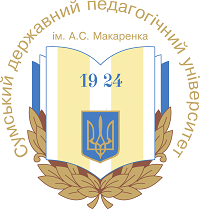FOREIGN EXPERIENCE IN THE USE OF METHODS OF PHYSICAL TRAINING OF YOUNG FOOTBALL PLAYERS IN THE PRE-COMPETITION PERIOD
DOI:
https://doi.org/10.32782/olimpspu/2025.1.23Keywords:
football, physical training, physical qualities, pre-competition period, methodsAbstract
Physical training is one of the key components of the football training process, as it ensures the development of essential physical qualities required for successful participation in competitions. Endurance, strength, speed, coordination, and flexibility form the foundation of effective football performance, and their development must align with the age, physiological, and psychological characteristics of young athletes. Proper training planning is particularly important, as it must consider not only the players' physical capabilities but also their level of motivation, psycho-emotional state, and individual characteristics.Young football players go through various stages of physical, mental, and social development, making it impossible to apply the same training programs across all age categories. A lack of adaptation of training loads to the physiological capabilities of children and adolescents can lead to overtraining, injuries, or premature exhaustion, negatively affecting their athletic progress and overall motivation. Therefore, a crucial aspect is the development and implementation of scientifically grounded training methods that not only enhance the necessary physical qualities but also prevent fatigue and injuries.This article focuses on the analysis of scientific literature and the review of modern physical training methods in youth football, particularly those used in the pre-competition period. It examines key concepts and approaches to developing the physical qualities of young footballers, their impact on the overall effectiveness of the training process, and the level of adaptation to competitive activities.Special attention is given to modern trends in athlete preparation, including the use of game-based methods, functional training, high- intensity interval training, and approaches that integrate physical and tactical development. Scientific research shows that optimal physical training for young football players is based on a comprehensive approach that includes a gradual increase in workload, individualization of training programs, and recovery control. Furthermore, the integration of traditional training methods with modern technologies for monitoring athletes’ physical conditions plays a crucial role in adjusting workloads according to individual characteristics.Thus, this article provides a detailed analysis of existing physical training methodologies for young footballers, highlighting their advantages and disadvantages while offering recommendations for implementing effective training programs in youth football teams.
References
Bangsbo, J. (1994). The physiology of soccer-with special reference to intense intermittent exercise. Acta Physiologica Scandinavica, Supplementum, 619, 1-155.
Behringer, M., Vom Heede, A., Yue, Z., & Mester, J. (2011). Effects of resistance training in children and adolescents: a meta-analysis. Pediatrics, 126(5), 1199-1210.
Behm, D. G., Blazevich, A. J., Kay, A. D., & McHugh, M. (2016). Acute effects of muscle stretching on physical performance, range of motion, and injury incidence in healthy active individuals: a systematic review. Applied Physiology, Nutrition, and Metabolism, 41(1), 1-11.
Bompa, T. O., & Haff, G. G. (2009). Periodization: Theory and Methodology of Training. Human Kinetics.
Buchheit, M., & Laursen, P. B. (2013). High-intensity interval training, solutions to the programming puzzle. Sports Medicine, 43(5), 313-338.
Cumming, S. P., Battista, R. A., & Malina, R. M. (2012). Physical and psychosocial development of young athletes: Perspectives on sport specialization and intensive training. International Journal of Sports Physiology and Performance, 7(4), 322-329.
Cummins, C., Orr, R., O'Connor, H., & West, C. (2013). Global positioning systems (GPS) and microtechnology sensors in team sports: a systematic review. Sports Medicine, 43(10), 1025-1042.
Deci, E. L., & Ryan, R. M. (2000). The 'what' and 'why' of goal pursuits: Human needs and the self-determination of behavior. Psychological Inquiry, 11(4), 227-268.
Faigenbaum, A. D., & Lloyd, R. S., & Myer, G. D. (2013). Youth resistance training: Past practices, new perspectives, and future directions. Pediatric Exercise Science, 25(4), 591-604.
Faigenbaum, A. D., & Myer, G. D. (2010). Resistance training among young athletes: safety, efficacy and injury prevention effects. British Journal of Sports Medicine, 44(1), 56-63.
Faigenbaum, A. D., & Westcott, W. L. (2009). Youth Strength Training: Programs for Health, Fitness, and Sport. Human Kinetics.
Ford, P. R., Yates, I., & Williams, A. M. (2010). An analysis of practice activities and instructional behaviours used by youth soccer coaches during practice: Exploring the link between science and application. Journal of Sports Sciences, 28(5), 483-495.
Franchini, E., Brito, C. J., Artioli, G. G., et al. (2011). The effects of high-intensity intermittent exercise training on strength and conditioning variables of young judo athletes. Journal of Strength and Conditioning Research, 25(2), 459-465.
Gabbett, T. J., Kennelly, S., Sheehan, J., Hawkins, R., Milsom, J., King, E., … & Ekstrand, J. (2016). If overuse injury is a 'training load error,' should undertraining be viewed the same way? British Journal of Sports Medicine, 50(17), 1017-1018.
Gould, D., Collins, K., Lauer, L., & Chung, Y. (2011). Coaching life skills through football: A study of award- winning high school coaches. Journal of Applied Sport Psychology, 19(1), 16-37.
Hill-Haas, S., Dawson, B., Impellizzeri, F. M., & Coutts, A. J. (2011). Physiology of small-sided games training in football: A systematic review. Sports Medicine, 41(3), 199-220.
Horn, T. S. (2008). Advances in Sport Psychology. Human Kinetics, 235.
Issurin, V. B. (2008). Block periodization versus traditional training theory: a review. Journal of Sports Medicine and Physical Fitness, 48(1), 65.
Jokl, P. (2004). Soccer and Medicine. Clinical Sports Medicine, 23(3), 1-12.
Kraemer, W. J., Ratamess, N. A., & French, D. N. (2004). Resistance training for health and performance. Current Sports Medicine Reports, 3(3), 165-171.
Lloyd, R. S., & Oliver, J. L. (2012). The youth physical development model: A new approach to long-term athletic development. Strength and Conditioning Journal, 34(3), 61-72.
Malina, R. M., Bouchard, C., & Bar-Or, O. (2015). Growth, Maturation, and Physical Activity. Human Kinetics.
Malina, R. M., Rogol, A. D., Cumming, S. P., Coelho-e-Silva, M. J., & Figueiredo, A. J. (2016). Biological maturation of youth athletes: assessment and implications. British Journal of Sports Medicine, 50(9), 512-523.
McGill, S. M. (2010). Ultimate Back Fitness and Performance. Backfitpro Inc.
Mujika, I., Spencer, M., Santisteban, J., Goiriena, J., & Bishop, D. (2009). Age-related differences in repeated-sprint ability in highly trained youth football players. Journal of Sports Sciences, 27(14), 1581-1590.
Myer, G. D., Jayanthi, N., Difiori, J. P., Faigenbaum, A., Kiefer, A. W., Logerstedt, D., & Micheli, L. J. (2013). Sports specialization, part II: Alternative solutions to early sport specialization in youth athletes. Sports Health, 5(5), 332-336.
Reid, D. A., Vanweerd, R. J., Larmer, P. J., & Kingstone, R. (2018). The effects of static stretching on range of motion and performance: A systematic review. Physical Therapy in Sport, 14(3), 130-135.







